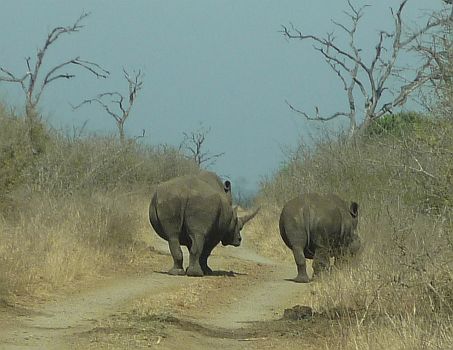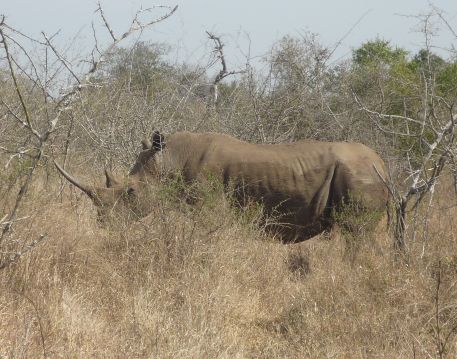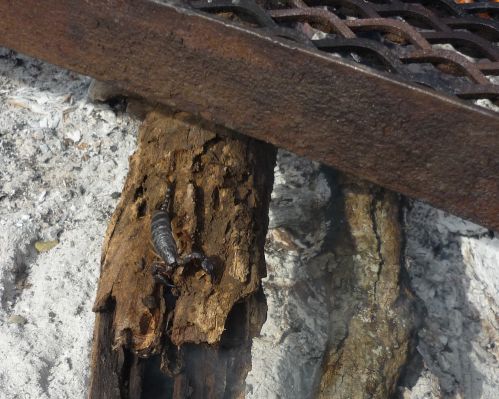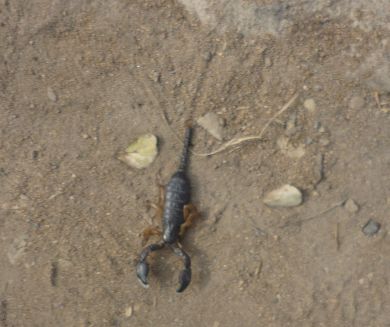There were clouds all last night, so the temperature was 55F this morning instead of in the 40s. If the clouds remain, it will not warm up. At 11am the temperature at the site was 53F. I’m glad I took my jacket today, because the buildings are cooling down without the sun shining to warm them up.
While the transmitters were on the air this morning, I reviewed the HCJB drawings for the grounding switch and found that the TX3 grounding switch had been made according to that drawing. Based on our successful modification yesterday, suggestions will be made for changing the drawings to the more reliable configuration.
TWR Swaziland does not have an easy way to read AutoCad files, so Jonathan volunteered to convert all the HC100 drawings to PDF files. Unfortunately, he found out that, before the conversion can be done, about 20% of the drawings need to be modified. This would be a long, tedious process, since there are about 2,000 drawings. I will check to see if it can be more easily done at HCJB Elkhart, if they have not already done it.
Graham has been testing some spare metering boards to determine if they were functioning properly. If so, then he would place them into the stock room. While doing the testing, he discovered that the driver ambient air temperature on TX1 was reading 204.7C and someone has raised the metering limit to 500C to prevent it from tripping off the transmitter. This reading was an indication of an open circuit. It was found that the sensor’s plug had come apart. After putting the plug back together, the temperature read 27C and the limit was returned to its normal 50C.
When the transmitters started to tune up for last evening’s transmissions, something happened on TX3 to cause the filament circuit breaker to trip. It was assumed that the controller was allowing the voltage to ramp up too quickly, thus causing excessive current. Today we checked the controller and it was functioning properly, then we heard a relay pull in, which bypassed the controller. I recalled that this transmitter has a 1/4 power filament feature and suspect the relay is part of that circuit.
We decided to see if it was possible to repeat the sequence of events that tripped the breaker, but this time watching the PA filament voltage. When the filaments went to 1/4 power, the filament remained at 9.8 volts (full power). The driver was switched on and the PA tube filament voltage remained at 9.8 volts until the ‘driver on’ delay ended. At this point the voltage dropped to about 4 volts and climbed slowly back to normal. This time, the breaker did not trip, but was probably very close to the tripping point. I am guessing the relay that bypasses the controller dropped out at this point. Since the controller senses current, I suspect it instantly goes from sensing no, or little, current (due to the relay bypass) to full current. There is likely a delay in the controller’s ability to handle this rapid of a change. Since it was almost time to begin broadcasting, the transmitter was put on the air for the evening.
TX2 had a 40 minute break in broadcasting just before we left for the weekend. It has often failed to come up when the automation called for it to come on after this break. I decided to switch it on manually, since it was due to come on within a few minutes anyway. The filament on light was flashing, indicating 1/4 power filaments. When I pressed driver on, an ‘undetermined fault’ message came up and the filaments were turned off by the computer. By manually turning the filaments back on, the transmitter came on properly.
I am beginning to suspect the problems of both TX3 and TX2 filaments unexpectedly turning off may be associated with this 1/4 power filament power feature, which is supposed to reduce the filament power when the transmitter is off to save power costs. All three transmitters have this updated software installed. TX1 and TX2 do not have the circuitry to implement it and I now suspect TX3, which is newer, has this circuitry bypassed. It looks like further investigating will be done on Monday.
Tomorrow, Virginia and I have been invited to go to Hlane Game Park with Steve and Lorraine.










